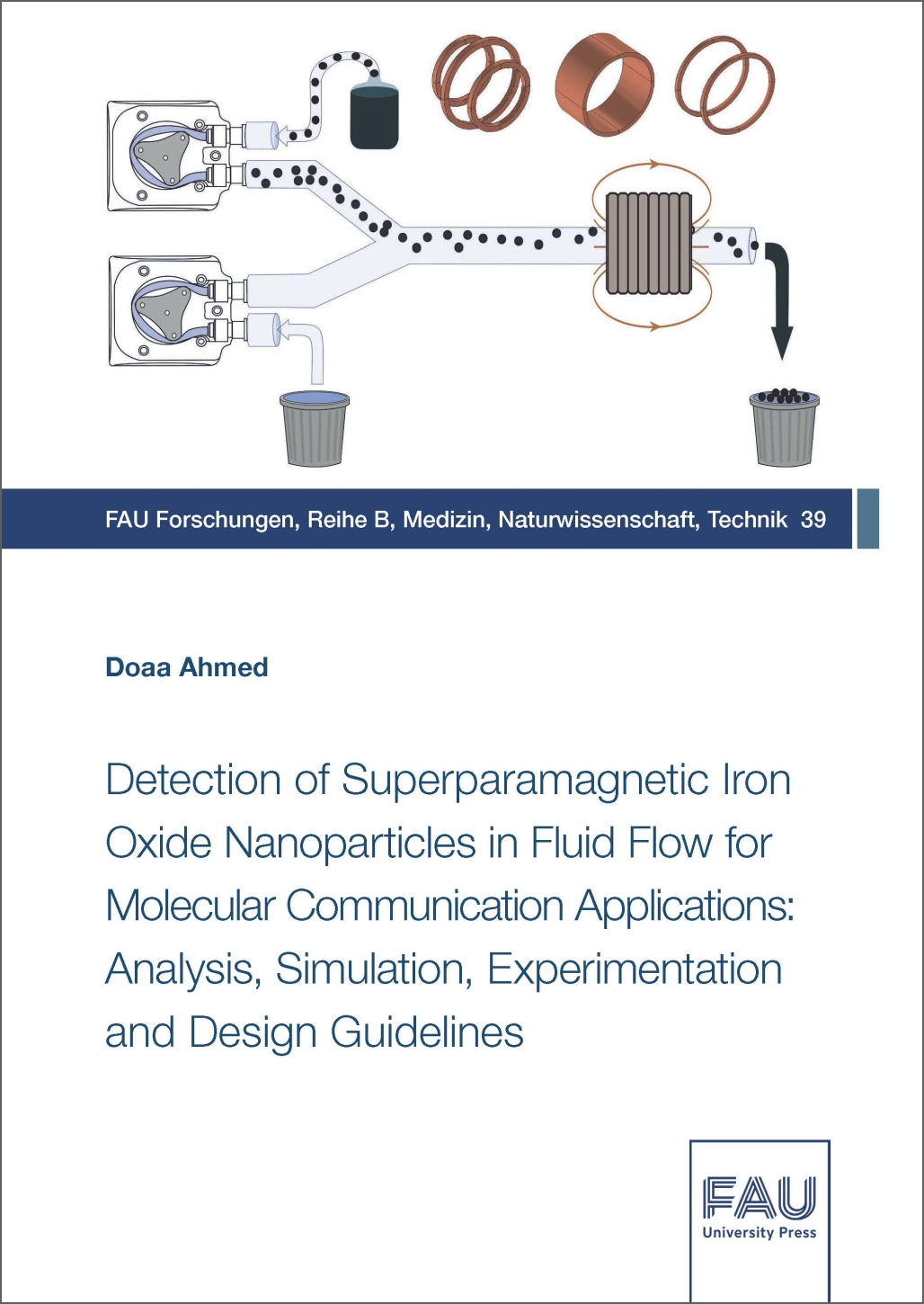Description
In this dissertation, based on the Molecular Communication (MC) system, a macroscale aqueous-based testbed is used to imitate the propagation of biocompatible drug-loaded Superparamagnetic Iron Oxide Nanoparticles (SPIONs) through a human vessel for drug delivery applications. In the testbed, particle suspension is pumped at different flow rates into a channel filled with water and detected by a susceptometer. All fundamentals required to understand the testbed’s physics are discussed. In a preliminary study, the testbed is simplified to a 2D rotationally symmetric model described mathematically, and its flow regime is analytically derived. A full numerical study of the simplified model is carried out. To avoid the computational complexity of the 3D Multiphysics simulations, the magnetic and fluidic simulations are decoupled and simulated separately, from which the system response is efficiently estimated. Other detectors, including Helmholtz, Maxwell, and planar coils, are also considered. The detected signal of the coils is found to be directly proportional to the volume susceptibility and thus to the density of the particles in their detection regions. Changing the particle distribution inside the transmitter before being injected into the channel leads to various distributions inside the detector, significantly affecting the system response.


Reviews
There are no reviews yet.